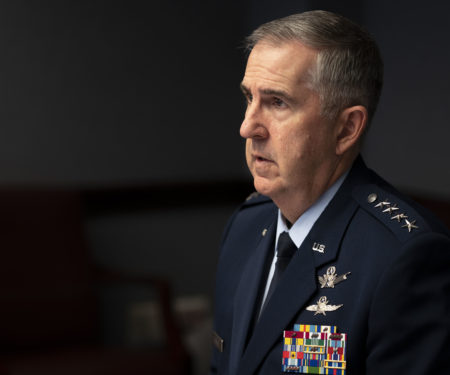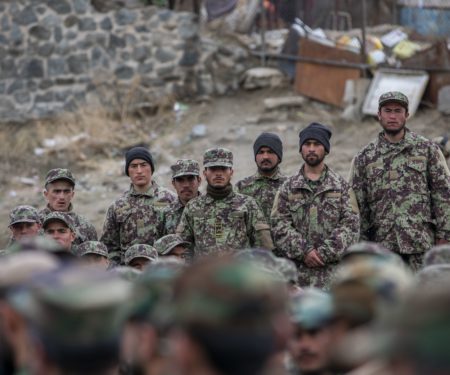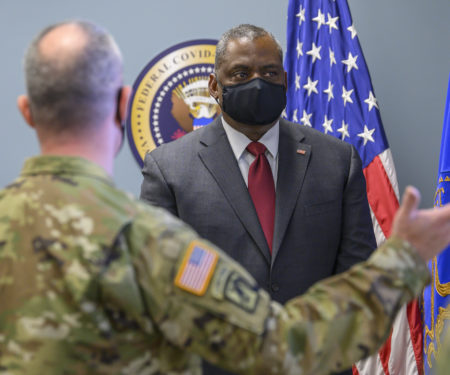Radar Sweep
‘We're Going To Lose Fast’: US Air Force Held a War Game That Started with a Chinese Biological Attack
Last fall, the U.S. Air Force simulated a conflict set more than a decade in the future that began with a Chinese biological-weapon attack that swept through U.S. bases and warships in the Indo-Pacific region. Then a major Chinese military exercise was used as cover for the deployment of a massive invasion force. The simulation culminated with Chinese missile strikes raining down on U.S. bases and warships in the region, and a lightning air and amphibious assault on the island of Taiwan.
Air Force Only Service to Develop Cybersecurity Requirements for Weapon Systems Contracts, GAO Says
Despite the Defense Department’s ongoing efforts to build networked weapon systems heavily dependent on software and information technologies, the military service branches have not all issued clear guidance describing how acquisition officials should incorporate cybersecurity requirements into contracts for these systems.
A Radical Plan Calls For Shifting Billions to State from Defense
A new report from the Center for American Progress calls for a radical overhaul of the U.S. security assistance program, including shifting roughly $7 billion in funding streams from the Pentagon to the State Department to ensure stronger, more cohesive oversight.
Defense Intelligence Agency Emphasizing Customer Centricity in 5-Year Strategy
A new strategy from the Defense Intelligence Agency Chief Information Office published at the beginning of 2021 helps lay out the agency’s data and IT goals. The document was not only for its employees and other agencies the DIA works with—it was also a message to vendors and other partners on what the needs are and how they can help.
JAIC Planning Broad-Reaching Projects for 2021 Focused on Business and Logistics
The Defense Department’s Joint Artificial Intelligence Center is now out of its most nascent stages and off and running to make changes in the Pentagon; what that means for the next year is the organization will tackle big projects that have the most potential impact to spread AI throughout the military.
Air Force's MQ-9 Reaper Drone Replacement Requirements Now Include Air-To-Air Combat Capability
The Reaper’s successor should be able to defend both high-value manned aircraft and itself, in a high-end battlespace, according to the Air Force.
Navy's Whole T-45 Trainer Fleet to Get New Oxygen Systems after Hypoxia-Like Events
The U.S. Navy's entire T-45 Goshawk fleet will receive a new smart oxygen concentrator, a system crucial in providing pilots with clean air while in flight. Cobham Mission Systems announced March 9 that it won a Naval Air Systems Command contract to update the jet trainers with the GGU-25 next-generation concentrator.
Kosovo Sends Troops on Peacekeeping Mission for First Time
Kosovo on March 9 sent a military platoon to Kuwait to take part in the country’s first ever international peacekeeping mission. Kosovo is sending the unit on a six-month tour following a request from the U.S. Central Command. Its troops will be under the command of the National Guard of Iowa.
Trust in the Military Is Dropping Significantly, New Survey Suggests
Trust in the U.S. military has decreased significantly in recent years, but armed forces still remain among the most respected institutions in the country, according to a new public opinion poll released by the Ronald Reagan Institute this week.
Lockheed-Aerojet Deal Clears Another Hurdle
Aerojet Rocketdyne shareholders approved the company’s pending sale to Lockheed Martin on March 9, bringing the $4.4 billion deal another step closer to completion. While U.S. regulators continue to review the deal, Lockheed Martin says the planned acquisition of Aerojet will save the federal government $100 million annually by joining the makers of missiles and rocket motors into one company.
How the Army Combat Fitness Test Exposes the Military’s Unhealthy Focus on ‘Making Weight’
Concerns about the way the Army—and the Defense Department as a whole—measures height and weight exists outside the Army Combat Fitness Test (ACFT) and other service fitness tests. As Kristina Fauser-Martin, an Army performance dietician, explained, the body mass index, or BMI, was “never intended to be a measure of health,” adding that BMI was created by an astronomer in the 1830s who took measurements from a population of around 200 white men. Almost two centuries later, those same measurements are still being used for all ethnicities and genders.




